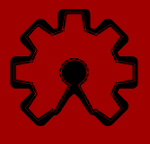KiCAD Forums
Last updated: 30 Aug 2014 - 16:08
A few weeks ago Chris Gammell (of The Amp Hour and more recently Contextual Electronics) has released his set of KiCAD videos, and set up a forum for users to discus the software, all available on the new kicad.info site. I've been using KiCAD for about 6 years now (I looked up my first PCB order I designed with it and it was September 2008) and whilst I happily recommend it to anyone who wants to get into PCB design, I've completely forgotten how complex it is to learn to use. I think the video series is a great starting point and the forums are a good way to troubleshoot specific issues you have. There are a good number of people on there now but the more people, the better the range of discussion. There are a couple of existing mailing lists for KiCAD, the developers mailing list on Launchpad and a users mailing list which is a Yahoo group that always gave me a really terrible user experience. The new forum is much more intuitive and interactive.
OSHW Logo for Kicad PCB Milling
Last updated: 01 Mar 2012 - 21:38

I've been tinkering with some simple PCB layout jobs in KiCAD over the last couple of weeks. (Hopefully they'll be worth posting here if I can get them finished!) One of these boards is probably going to be cut out on a PCB mill, so it's not going to have a solder mask or silk screen. I wanted to still have the Open Source Hardware logo, there's a big selection available at http://www.oshwa.org/open-source-hardware-logo/ including downloadable modules for KiCAD but they're all silk screen logos, so I went about creating a copper only logo.
KiCAD Open Source Schematic to PCB Tools
Last updated: 07 Feb 2012 - 22:19

You may have noticed in the schematics I post for various projects that I use KiCAD for all my designs. It's a free and open source package with no limitations on part count, pin count or board size. The software is cross platform, supporting Linux, Mac and Windows, and on Linux you'll probably find it in your distribution's repositories. Unlike the other big open source electronics design software gEDA it is fairly intuitive and not that different from other commercial packages I've used (OrCAD or Altium Designer). Unlike cost free versions of proprietary software like Eagle there are no reasonable limits on the board size, part count or pin count that you can create with this software and while it lacks some advanced features such as more complex curved pad shapes etc. it is very stable now and is well up to commercial work.
Z80 Project Memory Expansion
Last updated: 14 Mar 2011 - 00:11
The Mark 2 Z80 project featured a pair of memory slots each capable of taking up to 32K of RAM. This meant that a full 64K of RAM could be used because the ROM image is copied from the PIC's memory at boot time. However that didn't seem like much to me so a banking system and MMU were in order. (Also I found I couldn't get the 32K RAMTRON FM1808 chips in DIP any more!)
The new system is designed around 512K SRAM chips, up to 8 of them, although I've only wired up two sockets for 1MB of RAM for now. If you know your base 2 maths you should realise that I need a 22 bit address bus for the 4MB address space. This initially seems like an odd size but the design is based on the internals of the Amstrad NC100, a portable Z80 machine from the early '90s. The top 8 bits of the 22 are provided by one of four latches. Which of these latches provides the last 8 bits is decided by the Z80 address lines A14 and A15.
This means the physical memory space of the Z80 is made up by four 16K
Z80 Mark 2: The Great Documentation Project
Last updated: 19 Dec 2010 - 12:33
I recently received an enquiry about how the I/O throttling on the PIC worked to ensure that the PSP was shifting valid data out to the Z80. I had a look back at my code and figured out how I'd done it. However I realised in that conversation that the schematics for the project were vastly out of date and it seemed that I hadn't been keeping as up to date as I thought I was with my local copies. I've spent several evenings in the last week and more or less re-drawn all the schematics from scratch, referencing the old snippets and the code and occasionally resorting to the continuity tester!
The schematics are in a number of fairly self contained PDFs here, I'll push the KiCAD source to git hub in the new year after I've finished my Christmas trips. Each unit of the system is mainly only connected by the Z80 busses (data, control and address) although the interrupt controller and the I/O decode have a lot of ancillary signals in them. Hopefully this is all fairly clear, it inclu